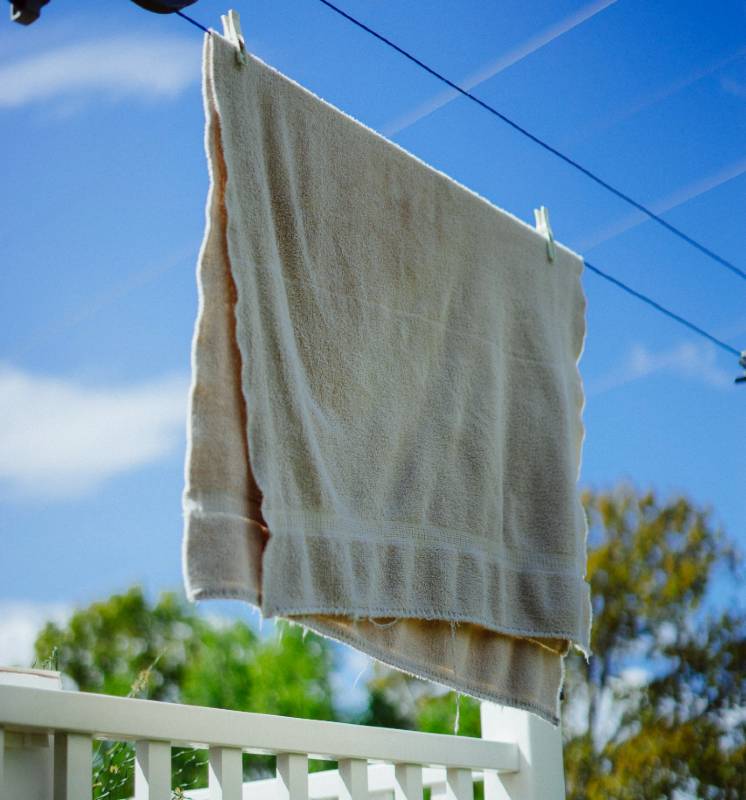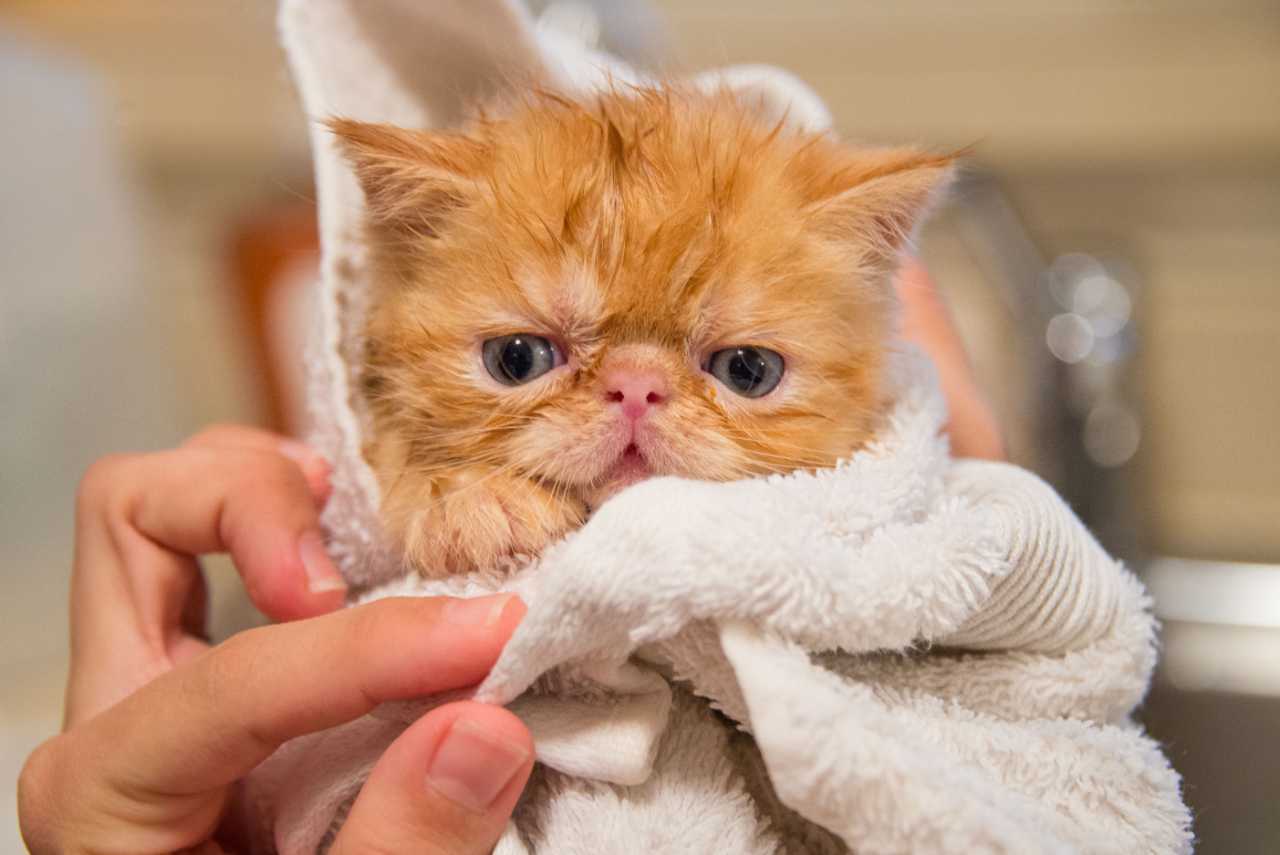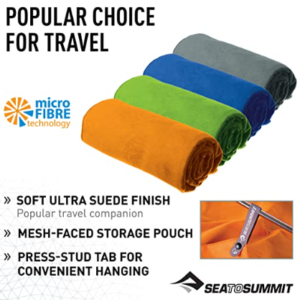I travel not to go anywhere, but to go. I travel for travel’s sake. The great affair is to move.
― Robert Louis Stevenson
Travels with a Donkey in the Cévennes

Tow·el /ˈtou(ə)l/
noun
a piece of thick absorbent cloth or paper used for drying oneself or wiping things dry.
As emphasized by the memorable Mr. Adams, a towel can be the most versatile and useful item in your pack. Towels can double as scarves, sun protection, pillows, blankets, privacy screens, clothing, and more! Backpackers should always carry their own.

Most people hear “towel” and think of a fluffy, encompassing, wrap of soft cloth. And when you’re home, or treating yourself to a stay at a fancy resort, that can be true. A backpacker, however, is faced with the necessity of carrying all of their possessions on their back, so they must settle for something a bit more practical and less luxurious. (Or not, if you don’t mind carrying the weight and bulk.)
Terry cloth is a thick material, usually cotton, with uncut loops on both sidesThe loops add surface area which improves its ability to absorb water. Terry cloth is cozy and agreeable…and gigantic. The downsides of a terry cloth towel are that it is:
There are better options for backpackers.

So what is a terry cloth towel good for? If you do have a terry cloth towel, don’t toss it in the bin just yet…Keep it at home: these pleasant accessories are perfect to have ready for overnight and weekend trips (just not the marathon of backpacking).
A big, fluffy towel is an unnecessary luxury for a backpacker. Many, many hostels provide free towels. Yours is a backup. Packing a small travel towel for yourself does not mean you are dooming yourself to frigid, dripping wet dashes to and from your dorm. A large travel towel, on the other hand, is a bulky burden.
Travel towels are usually sold in a range from extra small to extra large, so it’s easy to find the right one for you. Read the following descriptions and select the option that best suits your needs.
Approximately 12×24” to 16×32”
Best for those who:
If you are going for ultralight, a towel is still recommended. Opt for the smallest size towel available. All a UL traveller needs is enough towel material to absorb all the water from your body. That varies from person to person depending on surface area and desired degree of dryness. Start with a little extra and cut off any material as you decide you don’t need it.
Approximately 20×40” to 24×48”
Best for those who want:
The medium-large sweet spot has enough coverage for trips to and from the shower, but doesn’t take up most of your bag. For this option, you need a large enough size to cover yourself, but are trying to limit excess fabric. The only way to find out what size that is for your is to get a measuring tape and take your measurements!
Tip: You can use a piece of string/yarn/cord/whatever to wrap around yourself, and then lay that flat and measure it.
Approximately 30×60” and up
Best for:
If your trip is short and you don’t mind the weight and bulk, feel free to bring whatever size towel you desire.
Women:
Width = Distance from your armpits to 3″/8cm above your knee cap
Length = Your circumference* + 12″/30cm
Men:
Width = Distance from the top of your hip bone/wase to 3″/8cm above your knee cap
Length = Your circumference* + 12″/30cm
*measure your circumference at the widest point the towel will cover. Add 12”/30cm to that length so that the towel overlaps a little and will not flap open when you walk.
Pro Tip: If you can not find the perfect size towel, create your own! Order the next size up, cut off what material you don’t need, and sew the edges.

Once you’ve picked the size and material of your travel towel, you can narrow down your choices by what bonus features it has. None of these are necessary, and there are ways to rig up your own solution, but they can be nice to have.
In addition to a towel, backpackers should always have a sarong. Towels and sarongs are great multi purpose items.
Best for those who:
Sarongs can be made from the same materials as travel towels, usually nylon or cotton, but they are not designed specifically to absorb moisture. They are usually thin and breathable so they will dry quickly. Sarongs are larger than most travel towels, in the ballpark of 44×66”. Because of their larger size, they can be used as a blanket, bed sheet, scarf, skirt, dress, rucksack, and more. Sarongs make great beach blankets and can even double as your covering on the way to/from the beach!
Carrying both a sarong AND a travel towel allows you to customize your gear. You can have a any sized towel that you keep separate (and clean!) for bathing, and a sarong to wear about and use any way you need.
It’s important to maintain your gear. With travel towels, that means keeping it clean and odor free.
If your towel starts to smell a little off, even after washing, soak it separately in hot water (under 200℉/not boiling) with 3-4 tablespoons of baking soda. Let it sit for 10-15 minutes, rinse, and dry completely. Also, wipe down the inside of your bag from time to time.
TOP rECOMMENDATION
A travel towel is a must. It’s nice to have the right one for you, but don’t fret about getting it right the first time. Like everything, it’s going to take some time to figure out exactly what your preferences are. There are many options to explore.
After factoring in everything, our top pick is the Sea to Summit Drylite Towel, size large. It’s a little on the pricy side ($20-30) but is the perfect mix of size and performance.

Disclosure: This post may contain affiliate links, meaning at no additional cost to you, I will earn a commission or compensation if you click through and make a purchase. The opinions and recommendations expressed here are my own.





I've had the travel bug for as long as I can remember. My hope is that I can help others find their own adventure.
I travel not to go anywhere, but to go. I travel for travel’s sake. The great affair is to move.
― Robert Louis Stevenson
Travels with a Donkey in the Cévennes
